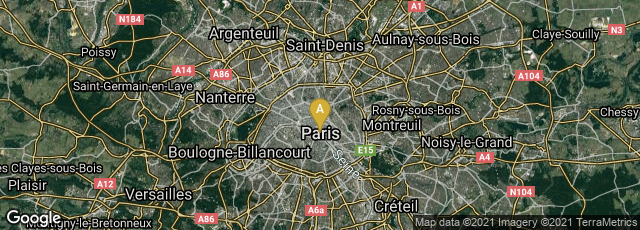

A: Paris, Île-de-France, France
In 1761 Astronomer and writer Joseph Jérôme Lefrançois de Lalande issued l'Art de faire le papier in volume 4 of the series Descriptions des arts et métiers published by the Académie royale des Sciences. Papermaking, a craft which had arrived in Europe in the 12th century, about 300 years earlier than printing, and had been passed down as trade secrets through apprenticeship for even longer than printing, was also later than printing in having a comprehensive manual published. The first comprehensive printing and typesetting manual had been published by printer Joseph Moxon roughly eighty years before de Lalande's, in 1683-84. By the mid-eighteenth century several other printing manuals — most notably that of Fertel— had been published. However, since literacy was not required for tasks in papermaking it is probable that some papermakers were illiterate, in contrast to printers, of whom typesetters and proofreaders, and the owners of printing shops, had to be literate. Thus it may not be entirely inappropriate that this first detailed treatise was written not by a professional papermaker but by a scientist and astronomer. Its publication in a handsomely and expensively printed scientific series would suggest that it was intended not necessarily for papermakers themselves, but for students of technology, or entrepreneurs who might enter the papermaking industry. Certainly the luxurious, expensive folio format of the Descriptions des arts et métiers with folio copperplate illustrations was not a format conducive to hands-on practical use within a paper mill.
De Lalande's work comprised 150 folio pages illustrated with 14 large engravings, describing the process of papermaking. Fundamental elements of the process were (1) Selection of raw material, i.e. rags. High quality white paper depended on using high quality white rags. (2) Conversion of rags into pulp (or "stuff"). When de Lalande published this process was done by a washer/beater "engine" propelled by water power. (3) Sheet-making and consolidation. (4) Sizing. (5) Sorting, Finishing and Packing. According to Cohen and Wakeman (reference cited below) the 14 plates reproduced by de Lalande "date from 1698 and were originally prepared for a text, now lost by Giles Filleau des Billetes completed in 1706." At this stage in the technology essentially nothing had changed in the process during the 50 years between the completion of the illustrations and de Lalande's writing.
When de Lalande published, other than the conversion of rags into pulp, via Hollander beater machines or stamp mills, papermaking remained a manual process, though a manual process assisted by machines. Papermaking would begin to become fully mechanized roughly fifty years later, in the early nineteenth century. A very careful and accurate observer, de Lalande consulted with numerous professional papermakers in different regions of France in order to write his treatise. The work covers all aspects of the trade, including the design and construction of buildings, the design of machinery and equipment, and the economics of the business, plus a glossary of terms of the trade.
De LaLande's work was translated into German along with the rest of the Descriptions des arts et métiers series, from 1762-75. An Italian translation of de LaLande's work appeared in 1762, an edition in Spanish in 1778, and a Dutch translation in 1792. Undoubtedly the text had significant international influence through the translations. In 2014 I was surprised to learn that an anonymous English translation of roughly one-quarter of de LaLande's text, credited as "from a late Treatise, in French" was serialized in London in The Universal Magazine issues for March, May and June of 1762 and February and April, 1763, with reproductions of 5 of the plates. These portions were reprinted with an introduction by Colin Cohen and Geoffrey Wakeman and issued in an edition limited to 200 copies by the Plough Press, Loughborough in Leicestershire, England, 1978. The complete work work was first translated into English by Richard MacIntrye Atkinson more than 200 years after its original publication, in a splendid full-size edition limited to 405 leatherbound copies in 1976. This new English translation, published by The Ashling Press, Mountcashel Castle, Kilmurry, Sixmilebridge, Co. Clare, Ireland, included all the plates printed on blue hand-made paper made by Ashling Papermakers.
Hunter, The Literature of Papermaking 1390-1800 (1925) 33.